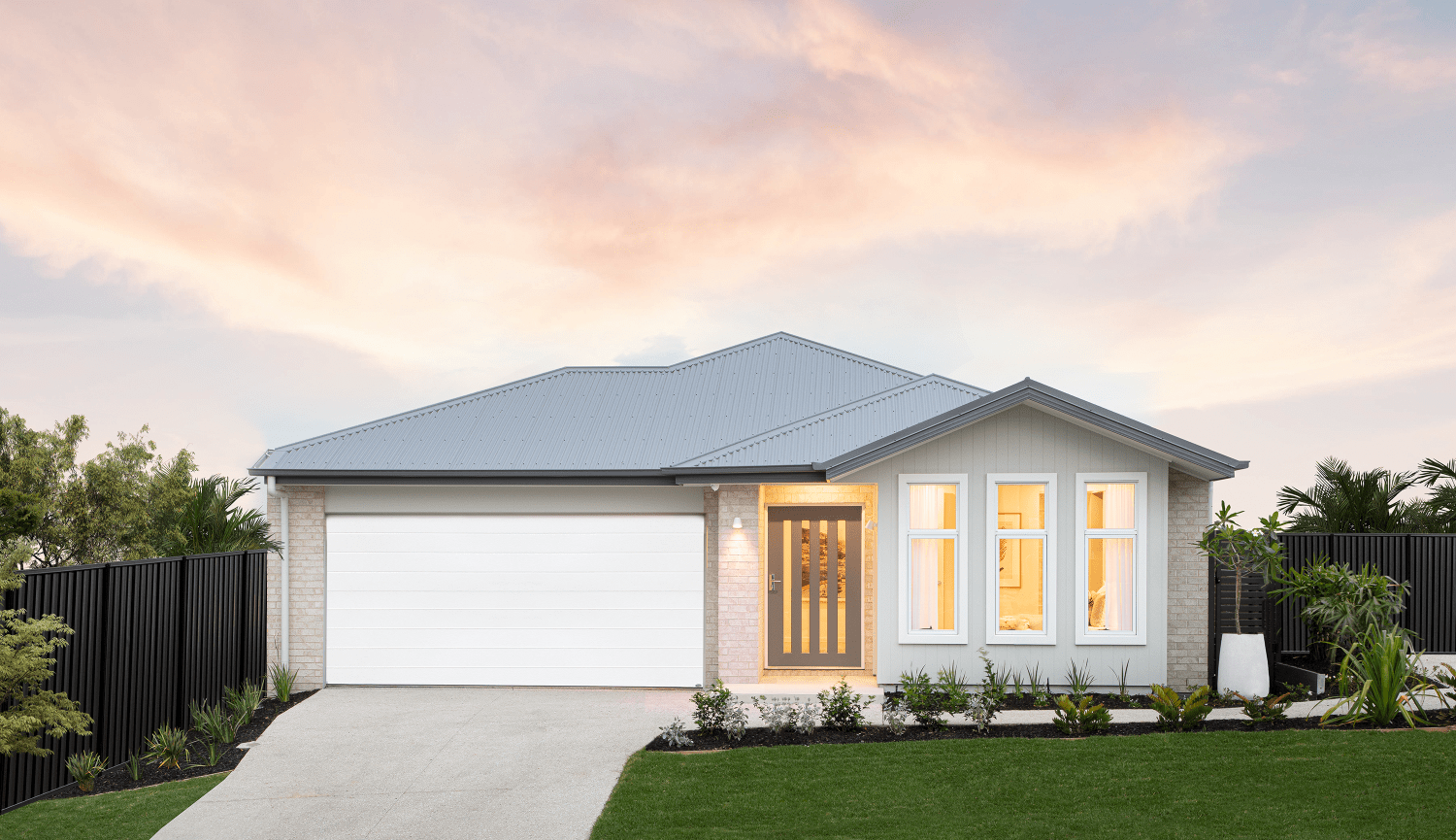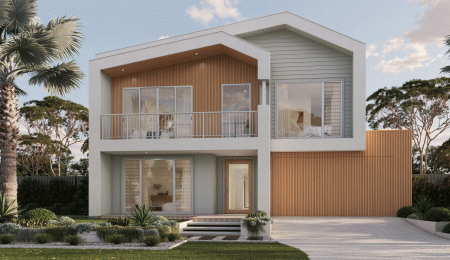The Best House Orientation

Choosing the right house orientation can make a huge difference to how comfortable your home feels all year round. So, if you’re planning to build a brand-new home or thinking about buying an existing property, you’ll want to learn more about house orientation. Why? Because it can have an effect on everything from natural light and breezes to energy efficiency and heating and cooling costs.
At Brighton Homes, we believe great home design starts with your land. Here’s what house orientation means, why it matters and how to choose the best orientation for your Queensland home.
What Is House Orientation
House orientation refers to the direction your home faces on your block, and how its main living areas and windows are positioned to capture (or block) sunlight and breezes. Despite its importance, house orientation is often overlooked, especially by first-time builders.
While it’s easy to focus on your floor plan and the finishes, orientation is important for how it will impact your home’s long-term comfort and energy performance. A well-oriented home can:
- Bring in natural light for brighter, happier interiors.
- Lower your heating and cooling costs by working with nature instead of against it.
- Improve indoor air quality by supporting natural ventilation.
The Role of True North and Sun Angles
The position of the sun changes throughout the year, and true north (also called solar north) is the reference point that builders use to figure out how the sun’s path will interact with your block.
Here in Queensland, solar access predominantly comes from the north, meaning homes designed to face north can make the most of natural warmth and light in winter, while also being easier to shade in summer.
The sun’s angle varies between seasons in Queensland:
In summer, the sun sits higher in the sky, which means eaves and overhangs can shade your north-facing windows.
In winter, the sun is lower, which means more direct light gets into your indoor spaces.
Getting true north right at the design stage will mean your home can take advantage of the seasonal sun movement, which will boost both your home’s energy efficiency and year-round comfort levels.
North-Facing House Orientation
In South East Queensland, north-facing homes are considered the gold standard for orientation because they get consistent natural light throughout the day, especially in living areas.
North-facing living areas capture the winter sun as well, which keeps your home warmer when you need it most. In summer, smartly designed shading – like eaves, verandahs and awnings – can block the harsh midday sun.
This particular orientation is great for open-plan living areas, outdoor entertaining zones and even where you position your solar panels. In other words, it’s arguably the most energy-efficient option for Queenslanders.
East-Facing House Orientation
An east-facing home enjoys morning sun – perfect for kitchens or home offices that you use early in the day. But east-facing homes also miss out on afternoon warmth, so it might feel colder in winter unless your home is very well insulated.
For Queensland’s hot summers, this orientation can be very handy because you don’t get the full brunt of the afternoon heat. However, you might still need shading or external blinds to block the strong morning sun in summer.
South-Facing House Orientation
A south-facing house tends to be cooler and darker as it only gets limited direct sunlight, which can be a challenge for keeping your living areas bright and warm, especially in winter.
The good news is that south-facing homes can work well in hotter climates like most parts of Queensland, where minimising your heat gain is a priority. Clever design can still capture indirect natural light from other sides of the house as well.
West-Facing House Orientation
West-facing homes get the hot afternoon sun, which can really increase your cooling costs in summer. Without proper shading, your home can feel uncomfortably hot in the late afternoon and evenings.
If a west-facing orientation is your only option, strategic design – like placing the garage on the western side – can shield your living areas from the harsh sun.
Harnessing Natural Light
Natural light is one of the most valuable things in home design. It brightens your mood, lowers your energy bills and – perhaps most important of all – fill the space with a sense of warmth and connection to the outdoors.
The Best House Orientation For Natural Light
For maximum natural light in South East Queensland, you’ll want to buy or build a home with a north-facing orientation. Your home will be able to capture gentle, consistent light year-round, especially in your main living areas.
East-facing windows bring in beautiful morning light, which is perfect for breakfast areas, while west-facing windows should be carefully shaded to avoid overheating. South-facing windows will give you softer, indirect light, which can work well in bedrooms or utility spaces.
Designing for Efficiency and Comfort
Smart orientation isn’t just about sunlight – it’s also about using breezes and shading to create a home that naturally regulates temperature.
The Best House Orientation For Energy Efficiency
A north-facing orientation gives you the best balance of passive heating and cooling in Queensland’s subtropical climate. Combined with:
- Eaves or pergolas for keeping unwanted summer sun out or to exclude winter sun.
- Cross-ventilation to catch cooling breezes and prevailing wind patterns.
- Thermal mass flooring (like concrete slabs) to store and release heat.
- Double glazing for climate control.
When used together, you’ll be able to reduce your reliance on artificial heating and cooling, which will in turn cut both your energy bills and your carbon footprint.
Queensland Climate Considerations for House Orientation
Queensland’s climate has everything from mild winters and hot summers in the southeast to the tropical conditions up north. What this means is that your orientation strategies need to match the local conditions.
The Best House Orientation For Queenslanders
In South East Queensland, north-facing orientation works particularly well as you can balance the warm winter sun with smart shading in summer.
Homes designed to catch prevailing breezes can also enjoy natural ventilation, which lessens the need for air conditioning.
Further north, where cooling is a round-the-clock concern, shading and ventilation become even more important – often prioritised over solar gain.
While north-facing homes are generally preferred, the best orientation will always depend on your exact location and lifestyle. At Brighton Homes, we take the time to review your land and understand your priorities helping you build a home that works with nature, not against it.
Ready to explore your options? Visit one of our many display homes or talk to the Brighton Homes team about finding the perfect orientation for your dream home.



